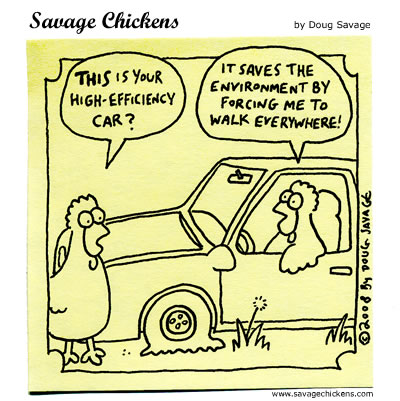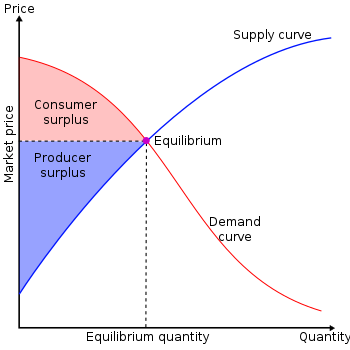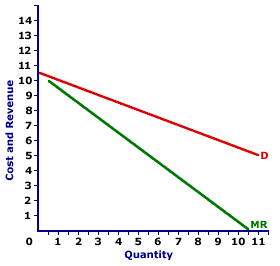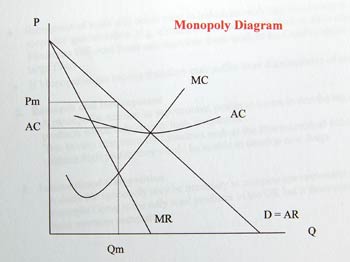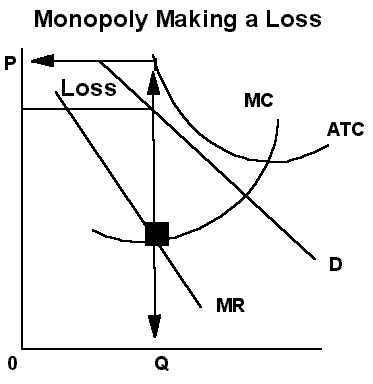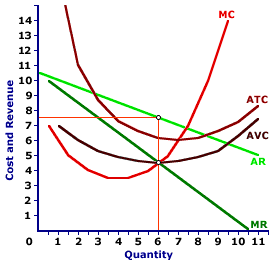Today, we begin game theory, which is interesting and exciting- probably one of the neatest things you will learn in Microeconomics.
Oligopolies use game theory, because decision-making is strategic- it hinges on the decisions of other firms.
OLIGOPOLY CHARACTERISTICS
-Several Sellers (but not many: 2 or 3 is most common)
-They must sell a similar, but differentiated good (ie: coke and pepsi both sell soda, but they are well-differentiated. GM and Ford both sell cars, but the brands are different, as are the cars).
-Entry and exit from the industry is possible, but very very difficult
-All of the firms can act as price setters within a reasonable limit.
REASONS FOR OLIGOPOLY
1: STRATEGIC BEHAVIOR (It benefits the firms in the oligopoly industry, so firms will actively vie to maintain oligopoly conditions)
-Merger and acquisitions (bigger companies buy up smaller companies, so that in the long run, in major industries, there are only a few large companies competing)
-With fewer rivals, the remaining players reap larger profits
-This can only occur if there are substantial barriers to entry
2: NATURAL CAUSES
-Economies of Scale: Bigger, well established companies have bigger cost savings, and are more able to approach the minimum efficiency scale than newer entrants
-Economies of Scope: It is cheaper for a company to produce two products together
-Oil and gad had both economies of scale and scope working in favor of established companies, because larger firms have an advantage over smaller firms (especially in unstable economic times, when many smaller firms go under)
3: ARTIFICIAL CAUSES
-Oligopolies due to government policies
-------------------------------
GAME THEORY/STRATEGIC BEHAVIOR: Decisions that are based on what other people do. (This section will HURT your brain)
Game: A decision making process of two or more players who are interdependent. There are two different kinds of games:
a) Simultaneous Game: Where both players make their decisions are the same time (or alternately, they don't know what the other player is going to do). An example of this would be rock-paper-scissors.
b) Sequential Game: One player makes a decision, then the other player reacts (sort of like a game of chess).
Player: The decision maker/strategist. In economics, this usually refers to the firm
Strategy: An interdependent decision (for example, choosing to move a pawn or a bishop could be two different strategies: choosing to cooperate with other firms and form a cartel or or choosing to compete and try to make more profit than other firms could be two different strategies)
Payoff: The outcome of a game: profits!

TODAY: WE ARE LEARNING ABOUT SIMULTANEOUS GAMES
Here are a few different important terms:
NASH EQUILIBRIUM: When each player's best strategy is to maintain its present behavior, given the present behavior of the rival. Given the behavior of the other, both players are simultaneously playing their best strategy. Both players have a best strategy, and "my best strategy is to keep doing what I'm doing as long as you keep doing what you're doing
-Nash EQ is stable, because both firms end up in a Nash Equilibrium scenario (both players want to play their best strategy)
-Nash EQ is an equilibrium, because neither firm will benefit from departing from it (in this way, equilibrium could have nothing to do with maintaining supply and demand)
-Nash EQ is self-policing, because there is no need for group behavior to enforce it (players will naturally adopt their best strategies)
-Stable equilibrium is reached by rational non-cooperation (if both players pursue self-interests, they will reach a Nash Equilibrium)
-THE DOMINANT STRATEGY is the strategy that yields a higher payoff, regardless of the strategy of the other player!
-THE DOMINATED STRATEGY is the strategy that yields a lower payoff than an alternate strategy, regardless of the strategy of the other player. This is the strategy, which logically should never be played because it will always lead to a lower payoff than different strategies.
NOTES:
-If two players are in a game, and both are playing their dominant strategy, then there is a Nash Equilibrium
-BUT a Nash equilibrium can be reached when not ALL parties have a dominant strategy
THE PRISONER'S DILEMMA: A dilemma which faces some players in a Nash Equilibrium (so this is still a type of Nash Equilibrium). In a prisoner's dilemma scenario, both players have a dominant strategy, but if they both play their dominant strategy, the resulting payoff is lower than if they had both played their dominated strategy.
-An example of this is studying. In order to get good marks in a class, each student's dominant strategy is to study. Interestingly, if none of the students in a particular class studied and they all go abysmally low marks, then the prof would have no choice but to scale their marks up, so that the average would end up being the same as it would if all of the students had studied. In this case, each student would have gotten the same mark-payoff, but for a minimal effort.
-The prisoner's dilemma highlights the difference between the narrow self interest of individual players, and the broad collective interest of a group.
-Other examples? -Advertising, Cellphones, Everyone Standing at a concert, everyone shouting at a party, CARTELS
CARTELS ARE AN EXAMPLE OF THE PRISONER'S DILEMMA SCENARIO: If all of the firms abide by the rules set by the cartel and actually restrict their outputs as agreed, all of the firm can generate economic profit (their collective payoff is higher than if they compete)
-If one member of a cartel cheats, however, they can potentially earn even GREATER profits than if they acted according to the restrictions of the Cartel
-If all members of a Cartel cheat, however, the Cartel will break apart and all of the firms will be in competition.

YUP! difficult decisions to make for Cartel participants...
FINAL DEFINITION: PARETO OPTIMUM- "You cannot make someone better off without making someone else worse off"
-This is one concept of "the best"
-Synonyms? Allocative efficiency; Pareto Optimality; Pareto Efficiency
-EXAMPLE: I have a chocolate ice cream cone, and my friend Genya has a butterscotch ice cream cone. My favorite flavor of ice cream is butterscotch, and her favorite flavor is chocolate. Is this a scenario of Pareto Optimality?
NO!
This may be productively efficiency, but it is not allocatively efficient. We can trade our ice cream cones and BOTH of us will be better off. Let's say me and Genya trade ice cream cones. This is an example of a PARETO IMPROVEMENT
PARETO IMPROVEMENT: An action which causes someone to be better off without making someone else worse off. The opposite of a Pareto Improvement is a Pareto Dis-improvement, which is an action which makes someone worse off without causing someone else to be better off (so if a garbage truck came by and threw rotten garbage on me and Genya's ice cream cones, that would be a Pareto Disimprovement).
Pareto Optimum is ONE defition of a best-case scenario. There can also be many different Pareto optimums (for an example, if both me and Genya have rye crackers, and we both love rye crackers, that can also be a pareto optimum)
Here are some different scenarios!
1: NASH EQUILIBRIUM - BOTH DOMINANT - PARETO

HERE, Actor one's best strategy is C1, regardless of what Actor 2 does, and Actor 2's best strategy is C2, regardless of what actor one does. As such, both actor one and Actor 2 have a Dominant Strategy (C1 and C2 respectively).
This is Nash equilibrium, given the action of the other player, both players are simultaneously playing their best strategy. The Pareto Optimum here is the same as the Nash Equilibrium, as both actors get "8" points in Nash Equilibrium. You can't make either actor better off than they already are, so this is Pareto Optimum!
2: NASH EQUILIBRIUM - ONE DOMINANT -PARETO

Here, businessman M's dominant strategy is to sell meat. No matter what the other businessman does, M will have a bigger payoff is she sells meat.
Businessman P, on the other hand has no Dominant Strategy. If M sells meat, it is better for P to sell Potatoes. If M sells Potatos, P will have a bigger payoff selling meat.
NASH EQUILIBRIUM, therefore, is when M is selling meat, and P is selling potatoes. In this scenario, given the actions of either player, both players are simultaneously playing their best strategy.
Pareto Optimum is the same scenario as Nash Equilibrium here. Both players are receiving the must payoff they can receive give the situation, so there is no way to make either player better off.
3: BATTLE OF THE SEXES- DOUBLE NASH EQUILIBRIUM, NO DOMINANT STRATEGY, & PARETO
Let's say we have a nice, normal heterosexual couple. The man likes baseball, and the woman likes ballet (they follow typical gendered behavior, which is the sort of thing that nice normal heterosexual couples do). However, the man and the woman both love each other SO MUCH that they would rather be with each other and at an activity which isn't their favorite than go to their favorite activity alone.

If the man goes to the baseball game, the woman's best strategy is to go to the baseball game too. If the man goes to the ballet game, however, the lady's best strategy is to go to the ballet game, so she HAS NO DOMINANT STRATEGY.
If the woman goes to the ballet, the man's best strategy is to go with her to the ballet. If the woman goes to the baseball game, however, the man's best strategy is to choose baseball, so he HAS NO DOMINANT STRATEGY!
There are two different Nash Equilibrium Scenarios here- both the man and the lady go to a baseball game, or they both see the ballet. In either situation, each player is playing their best strategy given the actions of the other player. Here, there are two different Pareto Optimums. If the couple are at the baseball game, it IS possible to make the woman happier, but not without making the man worse off. Conversely, if the couple is at the ballet, it IS possible to make the man happier, but not without making the woman worse off. Because we cannot make either player better off without making the other one worse off, there are two Pareto Optimums.
4: CARTELS: A PRISONERS DILEMMA NASH EQUILIBRIUM: BOTH DOMINANT, BUT NOT PARETO
In Oligopolies, firms behave interdependently, so decision-making is strategic (it depends on the actions of other players). As such, firms must take the actions of their rivals into account.
The basic dilemma: Should firms cooperate and form a Cartel, or compete with one another?
If firms cooperate, the collective profits for all of the firms will be higher
If a firm decides to compete with rivals, that firm's individual profit will be higher.

Here, both player A and player B's dominant strategy is to compete! As a result, Nash equilibrium occurs when both players are competing. This is NOT pareto optimum, however, as a change to a cooperative strategy for both players would result in a Pareto Improvement (in other words, the players are in Nash Equilibrium, they can both better off without making somebody else worse off).
This is why cartels often collapse: because their dominant strategy is to cheat!
That's all






